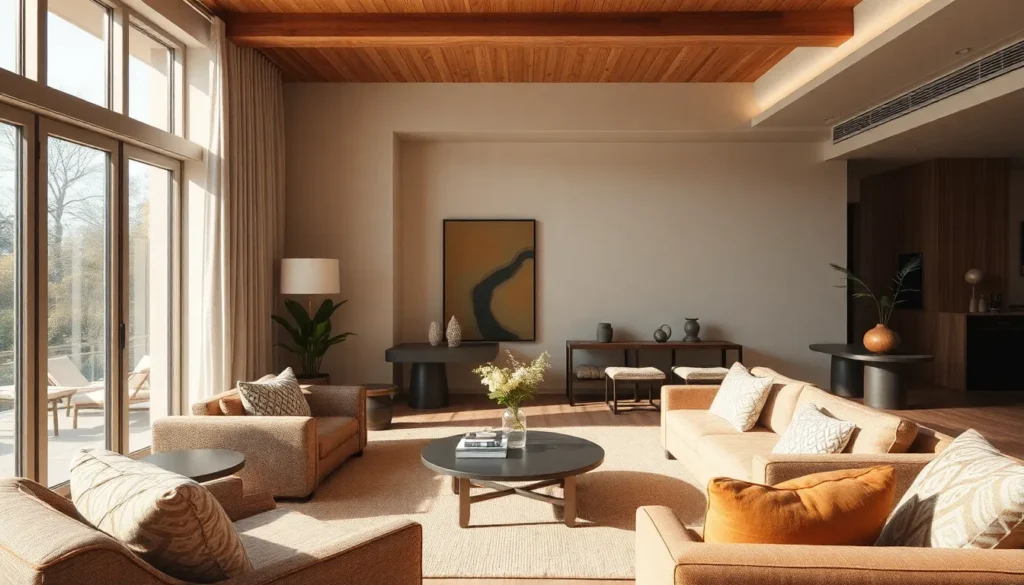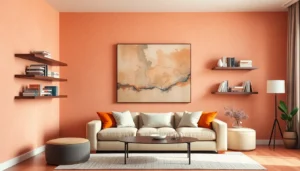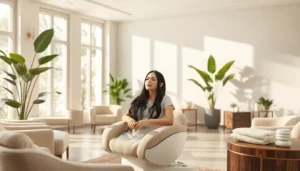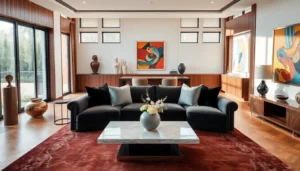In the world of design, the magic often lies in the details. From the subtle textures that add depth to a space to the carefully chosen color palettes that evoke emotion, these elements play a crucial role in shaping the overall aesthetic. Understanding how to master these design details can elevate any project, whether it’s interior design, graphic design, or product development.
Design details aren’t just about aesthetics; they also influence functionality and user experience. A well-thought-out design can create a seamless interaction, making everyday tasks easier and more enjoyable. By focusing on these intricate components, designers can craft spaces and products that resonate with their audience, leaving a lasting impression.
Table of Contents
ToggleOverview of Design Details
Design details play a crucial role across various domains, influencing both appearance and utility. They encompass elements such as shapes, materials, and patterns that contribute to the overall aesthetic quality of a project. These aspects create visual interest and enhance the functionality of designs, ensuring they meet user needs.
Textures
Textures provide depth and dimension, encouraging tactile interaction. Different textures, like smooth, rough, or glossy, evoke distinct emotional responses. Designers match textures to the intended atmosphere of a space or product, reinforcing themes and enhancing user enjoyment.
Color Palettes
Color palettes significantly affect mood and perception. Specific colors can energize, calm, or inspire creativity. Effective color combinations not only create visual harmony but also enhance brand identity, ensuring consistency across designs. Designers analyze color psychology to implement palettes that align with desired sentiments.
Shapes
Shapes contribute to the organization of visual information and influence spatial perception. Geometric shapes often convey modernity, while organic shapes evoke comfort and familiarity. Designers leverage shapes to guide the viewer’s eye and create focal points, leading to more engaging designs.
Patterns
Patterns add visual rhythm and context to designs. Repeated motifs can unify diverse elements within a space or product. Designers incorporate patterns to enhance branding while ensuring they complement the overall design.
Materials
Materials impact both aesthetics and performance. Choices range from sustainable options, like bamboo, to luxurious finishes, such as marble. Designers select materials based on functionality, durability, and environmental considerations, ensuring the final product aligns with user expectations.
By intricately weaving these design details together, professionals can create cohesive and impactful experiences that resonate effectively with users.
Importance of Design Details
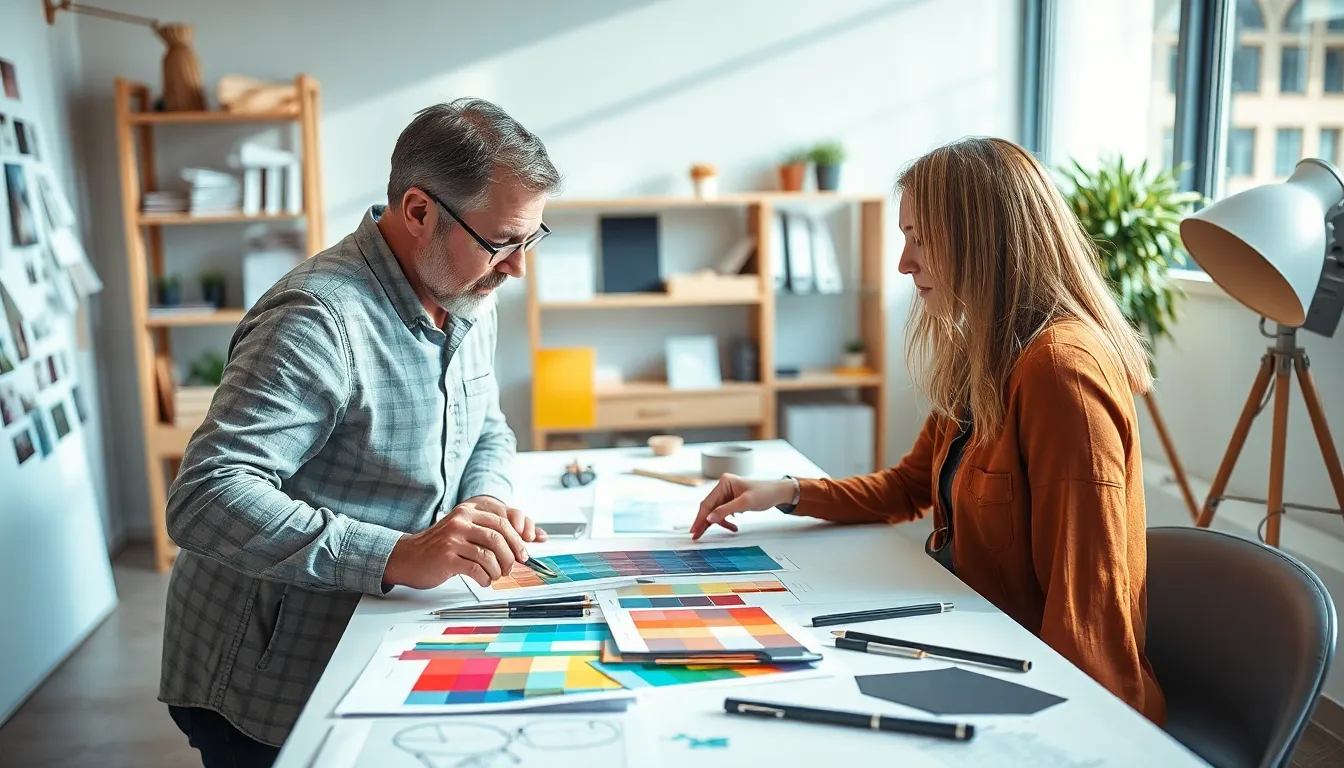
Design details play a pivotal role in creating impactful experiences across various disciplines. They significantly influence both functionality and aesthetics, ultimately shaping user interactions.
Enhancing Functionality
Design details enhance functionality by ensuring that products and spaces serve their intended purposes effectively. Elements like textures facilitate grip and comfort. Color-coded systems improve navigation and usability. Well-thought-out shapes optimize spatial organization, making environments intuitive. Moreover, strategic placement of materials can influence durability and maintenance. By focusing on these details, designers create solutions that not only look good but also work efficiently.
Boosting Aesthetics
Design details boost aesthetics by creating visually appealing environments and products. Textures add tactile interest, engaging users on multiple sensory levels. Color palettes evoke emotions and set the tone for experiences. Carefully considered shapes define form and structure, guiding viewers’ perceptions. Patterns introduce visual rhythm and coherence, unifying diverse elements within a design. By meticulously crafting these aesthetic details, designers produce engaging, memorable visuals that resonate deeply with users.
Key Elements of Design Details
Design details encompass various elements that are essential to achieving an effective aesthetic and functional outcome. Crucial components include color schemes, typography choices, and visual hierarchy.
Color Schemes
Color schemes significantly influence the mood and identity of a design. Designers select cohesive color combinations, considering the psychology of colors to evoke specific emotions. Monochromatic schemes use different shades of a single color, promoting harmony. Analogous colors sit next to each other on the color wheel, creating pleasing transitions. Complementary colors involve contrasting hues that enhance visual interest and focal points. Balancing warm and cool tones ensures accessibility and usability across diverse audiences.
Typography Choices
Typography choices play a vital role in conveying messages effectively. Selecting typefaces involves understanding their characteristics and the emotional responses they elicit. Serif fonts, with their decorative edges, evoke tradition and formality, while sans-serif fonts present a modern and clean aesthetic. Font weights, sizes, and styles contribute to readability and emphasis within a design. Pairing fonts strategically maintains visual harmony while highlighting important text elements. Consistent typography across platforms strengthens brand identity and user recognition.
Visual Hierarchy
Visual hierarchy guides the viewer’s attention through design elements. Establishing a clear structure involves utilizing size, contrast, and spacing to prioritize information. Larger elements draw immediate focus, while contrasting colors highlight critical features. Strategic use of white space creates breathing room, allowing viewers to process information easily. Layering and positioning elements reinforce the flow, ensuring users navigate content intuitively. Effective visual hierarchy enhances usability, making complex information comprehensible and engaging.
Types of Design Details
Design details vary significantly, with distinct approaches that reflect the underlying philosophy of a project. Two prominent types are minimalist design and maximalist design.
Minimalist Design
Minimalist design emphasizes simplicity and functionality. It reduces elements to their essential forms, promoting clarity and purpose. Key aspects of minimalist design include clean lines, neutral color palettes, and ample white space. These features create an uncluttered visual landscape that fosters a sense of calm and focus. Examples of minimalist design can be observed in contemporary architecture and product design, where less truly becomes more by enhancing usability while maintaining aesthetic appeal.
Maximalist Design
Maximalist design, in contrast, embraces abundance and complexity. It celebrates the richness of color, pattern, and texture, creating visually stimulating environments. Key characteristics include bold palettes, intricate patterns, and layering of materials. This approach invites exploration and engages the viewer’s senses, encouraging personal interpretation. Examples of maximalist design appear in eclectic interiors and graphic works that prioritize vibrancy and diversity, showcasing an artistic flair and personality. The interplay of various elements in maximalist design enhances emotional impact and cultural storytelling.
Design details play a pivotal role in shaping user experiences across various fields. By focusing on elements like textures, color palettes, and shapes, designers can create environments and products that not only look appealing but also function effectively. Each detail contributes to the overall narrative and emotional response, making the design memorable and engaging.
Whether opting for a minimalist or maximalist approach, understanding the impact of these details allows designers to connect with their audience on a deeper level. Mastering these aspects ensures that every design choice enhances both aesthetics and functionality, ultimately leading to more impactful outcomes.
